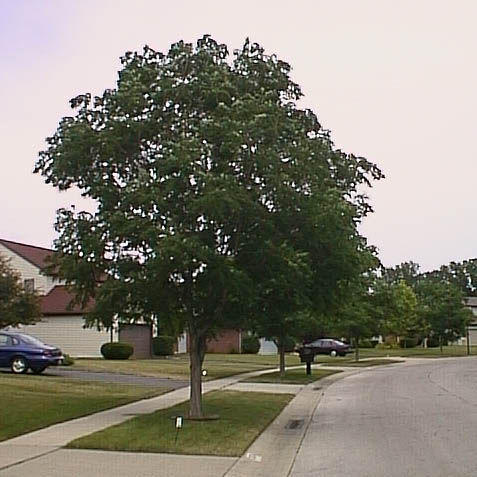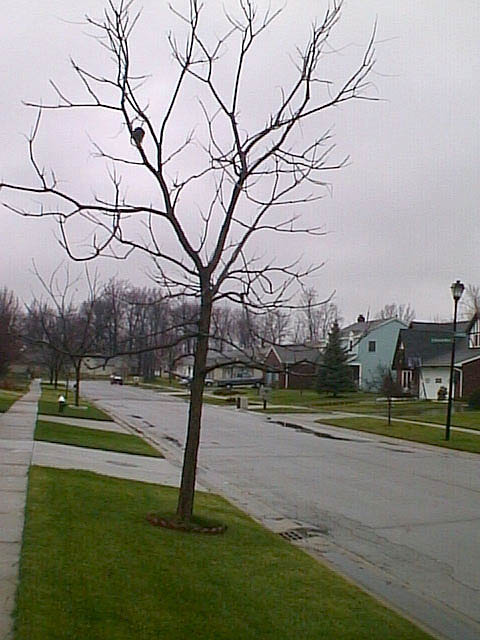Home Page | Selecting Trees for Biodiversity | Pea Family | Contact
Kentucky Coffeetree (Gymnocladus dioicus)
Background
Kentucky Coffeetree is an attractive, medium to large shade tree with a mature form not unlike some of the white oaks. It is often listed in the literature as being in the pea family, however more recent sources are beginning to list this tree along with honeylocust (Gleditsia triacanthos), and Eastern Redbud (Cercis canadensis) in the Senna family (Caesalpiniaceae).
Gymnocladus will tolerate a wide range of soils and moisture conditions. Bark is attractive grey with somewhat orange-like fissures when young becoming more white-oak like when older. The branch structure is coarse, with very stout twigs but the large bi-pinnate leaves give the tree an attractive fine texture in summer, and cast a fairly light shade that will not supress lawn growth. The fruits of the tree consist of thick flat pods approximately 2-3 centimeters by 5-7 centimeters containing large round flat seeds that can be used to produce a coffee-like beverage. For more plant I.D. information please see: the Virginia Tech Dendrology Site
The coffeetree will grow in zones 4 to 8. Will tolerate mildly alkaline soils, and appears to do reasonably well in urban and disturbed sites. The large bipinnate leaves break up in the autumn with the small leaflets decomposing rapidly leaving only the rachises which are easily collected. The tree has not been that popular with the nursery industry because when young, the trees are very sparce, with very few branches and are not always that attractive at the point of sale. However, the large leaves more than make up for this by creating a large green canopy in the summer. As the tree ages the coarse branch structure becomes stately and distinctive, and can be quite handsome.
|

Young Kentucky Coffeetrees growing streetside in a subdivision near Toledo, Ohio in Summer (above) and Winter (below).

|
Shade Tree Home Page
T. Davis Sydnor, Ph. D. and Nick E. D'Amato
Urban Forestry Department
School of Natural Resources
The Ohio State University
2021 Coffey Road,
Columbus OH 43210
(614) 292-3865
|

